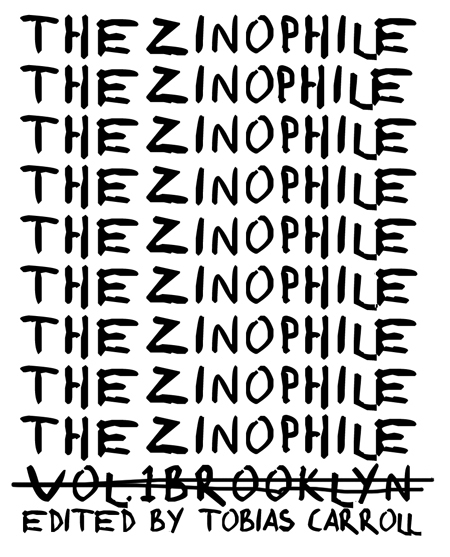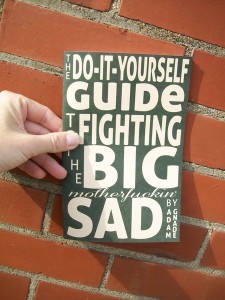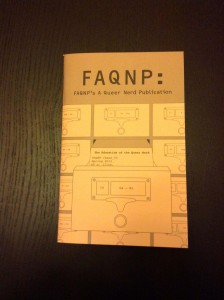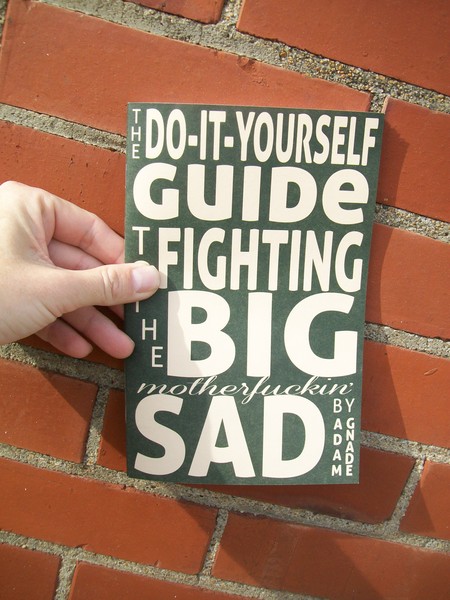
When I hear the phrase “DIY,” I inevitably think of something tangible: a piece of writing or an album, or a venture dedicated to disseminating something creative, whether a record label, publisher (print or online), or something similar. But our identities can be just as inherently DIY as our books, albums, and zines. There’s a trial and error to discovering who you are; some people had the aid of older siblings, while others (myself among them) discovered the things that they loved in fits and starts. The zines covered this week take aim at this; they’re examples of DIY that serve as vibrant reminders of the expansive boundaries of DIY.

First up: Adam Gnade’s The Do-It-Yourself Guide to Fighting the Big Motherfuckin’ Sad. Gnade is a musician and writer, and much of what he talks about here echoes his experiences in both. There are general thoughts on fighting depression, and more specific references to his own life — whether travels he’s made or responses to being trolled. And there’s a long paragraph about Chicago that presses all the right buttons for me — references to Hit it or Quit It and Saul Bellow, which is not a bad thing at all. There are appearances by the music of Conor Oberst and Ray Raposa, which is equally notable — and helps root Gnade’s work here in a larger aesthetic.

The latest issue of FAQNP is themed “The Education of the Queer Nerd.” Throughout, parallels are set up in interviews and essays between the last two words: essentially, how you find yourself in a particular culture. This idea leads to a number of smart pieces, from the board game metaphor put forth by Chris Noessel to interviews with the people behind Montreal’s B & D Press and Jonathan Kay to histories of queer zines past.
Paralleled in this issue is the sense of creating one’s identity though trial and error. Two short zines from Ayun Halliday continue that theme: one focuses on writing in public spaces, and the other is a guide to a few of Halliday’s favorite spaces in that vein: specifically, libraries.The Extremely Famous Writer’s Guide to Writing in Public contains a series of thoughts on writing in public spaces and irreverent prompts. Libraries I Have Known is — as the title suggests — short pieces on different libraries, from Juneau to Wellfleet. It was incredibly informative, both for the quick portraits of each that Halliday creates and for the short glimpses of her life that she offers in each piece.
Follow Vol. 1 Brooklyn on Twitter, Facebook, Google +, our Tumblr, and sign up for our mailing list.

